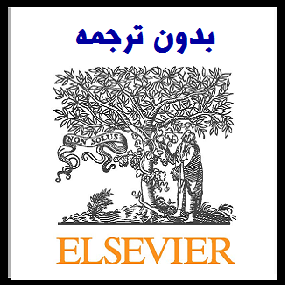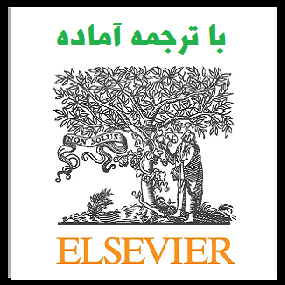مقاله انگلیسی اثر ساختار-خاک-ساختار لرزه ای در ساختمان مجاور در زلزله (2018 الزویر)


| عنوان فارسی مقاله | اثر متقابل ساختار-خاک-ساختار لرزه ای حالت عمیق تر در ساختمان مجاور در طول زلزله |
| عنوان انگلیسی مقاله | Higher mode seismic structure-soil-structure interaction between adjacent building during earthquakes |
| نمونه مقاله انگلیسی | Introduction
During an earthquake, civil structures interact with the surrounding soil beneath their foundations. These structures are typically analysed (dynamically) as singleton structures, i.e. without any consideration of their neighbouring structures. This phenomenon is widely known as Soil-Structure Interaction (SSI), and the importance of including its beneficial or adverse structural effects has been the focus of attention for more than 40 years. Nevertheless, the existence of a high density of buildings in large cities inevitably results in the possibility of seismic interaction of adjacent buildings through the underlying soil. This problem is better known as Structure-Soil-Structure Interaction (SSSI) and has received more attention in recent years. The pioneering works of Luco and Contesse [1], Kobori et al. [2], Lee and Wesley [3], Murakami and Luco [4], Wong and Trifunac [5], Lysmer et al. [6], and Roesset and Gonzales [7] have emphasized the complexity of the problem and have investigated the importance of considering the dynamic coupling between several structures. Some early experimental studies at real or small scaled conducted by Mattiesen and MacCalden [8], and Koroby et al. [9] have also captured the SSSI effects. More recent investigations have been developed based on numerical two or three-dimensional Finite Element Method (FEM), Boundary Elements Method (BEM) or a combination of these two FEM/BEM procedures. For example, the works of Qian and Beskos [10], Betti [11], Karabalis and Huang [12], Karabalis and Mohammadi [13], Lehmann and Antes [14], Qian et al. [15], Bard et al. [16], Yahyai et al. [17], Padron et al. [18], Bolisetti and Whittaker [19], among others. These studies have identified key factors that control the seismic interaction behaviour such as: (i) the inter-building distance, (ii) the direction of the alignment between foundations, (iii) the relative height and dynamic characteristics of adjacent buildings, (iv) the aspect ratio (the building height to width ratio), and (v) the soil class. Discrete soil/foundation-spring models have been successfully applied in the evaluation of SSSI problems, where Mulliken and Karabalis [20,21] calculated the interaction between adjacent two and three identical rigid surface foundations supported by a homogeneous halfspace soil, and subjected to impulsive, moment, sinusoidal and random loads. Recently, Alexander et al. [22] proposed a set of rotational springs to model the interaction between adjacent closely spaced buildings. These models were validated using finite element analyses. Aldaikh et al. [23,28] and Knappett et al. [29] extended the validation of these proposed interaction-spring models with both physical shake table and centrifuge tests. Additionally, Aldaikh et al. [24] proposed an alternative closed-form analytical expression for these interaction springs based on a Boussinesq approximation of the surficial displacement fields. These alternative formulae where shown to be completely consistent with those initially proposed and validated in [22,23,28]. Vicencio and Alexander [25] extended these previous models further by permitting the soil to exhibit nonlinear hysteretic behaviour. Results indicate that SSSI effects can increase with soil nonlinearity. |
| نمونه ترجمه کامپیوتری | مقدمه
در طی یک زلزله، سازه های مدنی با خاک اطراف خود در زیر پایه های خود ارتباط برقرار می کنند. این سازه ها به طور معمول (به صورت پویا) به عنوان ساختار تک تک، یعنی بدون توجه به ساختار همسایه خود، مورد تجزیه و تحلیل قرار می گیرند. این پدیده به عنوان Interaction-Structure Interaction (SSI) شناخته شده است و اهمیت افزودن اثرات مفید یا اثرات ساختاری آن بیش از 40 سال بوده است. با وجود این، وجود چگالی بالای ساختمان ها در شهرهای بزرگ به طور قابل توجهی موجب ایجاد تعامل لرزه ای ساختمان های مجاور از طریق خاک زیرزمینی می شود. این مشکل بیشتر به عنوان سازه-ساختار تعامل ساختاری (SSSI) شناخته شده است و در سال های اخیر توجه بیشتری یافته است. آثار پیشگام لوکو و Contesse [1]، کوبوری و همکاران. [2]، لی و وسلی [3]، موراکامی و لوکو [4]، وونگ و تریفاناک [5]، لیسمر و همکاران. [6]، و Roesset و Gonzales [7] بر پیچیدگی مسئله تاکید کرده و اهمیت بررسی اتصال پویا را بین چندین ساختار بررسی کرده اند. برخی مطالعات تجربی اولیه در مقیاس واقعی یا کوچک انجام شده توسط Mattiesen و MacCalden [8]، و Koroby و همکاران. [9] نیز اثرات SSSI را دستگیر کرده اند. تحقیقات اخیر بیشتر بر اساس روش عددی دو یا سه بعدی عنصر محدود (FEM)، روش عناصر مرزی (BEM) یا ترکیبی از این دو روش FEM / BEM صورت گرفته است. به عنوان مثال، آثار چیان و بسکو [10]، بتی [11]، کربالیس و هوانگ [12]، کربالیس و محمدی [13]، لمن و آنتس [14]، کیان و همکاران. [15]، بارد و همکاران. [16]، یحیی و همکاران. [17]، Padron و همکاران. [18]، بولیسیتی و ویتاکر [19]، و غیره. این مطالعات عوامل کلیدی را برای کنترل رفتار تعامل لرزه ای مانند: (i) فاصله بین ساختمان، (ii) جهت همگرایی بین پایه ها، (iii) ارتفاع نسبی و ویژگی های پویا ساختمان های مجاور، (iv ) نسبت ابعاد (نسبت ارتفاع ساختمان به عرض) و (V) درجه خاک. مدل های خاک / پایه و مجزا گسسته در ارزشیابی مشکلات SSSI با موفقیت مورد استفاده قرار گرفتند، در حالی که Mulliken و Karabalis [20،21] تعادلی بین دو مجاور دو و سه پایه یکسان سطح سفت و محکم با خاک خلفی نیمه تقسیم شده را تحت تأثیر قرار دادند ، لحظه، بارهای سینوسی و تصادفی. اخیرا، الکساندر و دیگران [22] مجموعه ای از چشمه های چرخشی را برای مدل سازی تعامل بین ساختمان های مجاور مجاور پیشنهاد کرد. این مدل ها با استفاده از تجزیه و تحلیل عناصر محدود شد. Aldaikh et al [23،28] و Knappett و همکاران. [29] اعتبار این مدل های پیشنهادی تعامل بهار را با هر دو جدول تکان دادن فیزیکی و آزمایش های سانتریفیوژ گسترش داد. علاوه بر این، Aldaih و همکاران. [24] یک فرمول تحلیلی جایگزین بسته برای این چشمه های تعاملی را بر اساس یک تقسیم بوسیصنک از زمینه های جابجایی سطحی پیشنهاد داد. این فرمول های جایگزین که در آنها نشان داده شده است کاملا سازگار با کسانی که ابتدا پیشنهاد شده و معتبر در [22،23،28] تایید شده است. ویسنسیو و اسکندر [25] این مدل های قبلی را با استفاده از اجازه دادن خاک به رفتار غیرخطی هیسترتیک، به نمایش گذاشتند. نتایج نشان می دهد که اثرات SSSI با عدم خطی خاک افزایش می یابد. توجه؛ (این ترجمه توسط نرم افزار انجام شده و ویرایش نشده است و احتمال وجود اشتباه در آن وجود دارد. در صورت ثبت سفارش، ترجمه توسط مترجمین مجرب انجام خواهد شد. برای مشاهده نمونه ترجمه های تخصصی و اخیر مترجمین جهت اطمینان از کیفیت ترجمه، اینجا کلیک نمایید.) |
| سال انتشار | 2018 |
| ناشر | الزویر |
| مجله | سازه های مهندسی – Engineering Structures |
| کلمات کلیدی | اثر متقابل ساختار-خاک-ساختار (SSSI)، تجزیه و تحلیل لرزه ای تاریخچه زمانی، دینامیک |
| کلمات کلیدی انگلیسی |
Structure-Soil-Structure interaction (SSSI), Time history seismic analysis, Dynamics |
| صفحات مقاله انگلیسی | 16 |
| مناسب برای رشته | مهندسی عمران |
| مناسب برای گرایش | سازه، زلزله، ژئوتکنیک |
| توضحیات | این مقاله انگلیسی جدید بوده و تا کنون ترجمه نشده است. جهت ثبت سفارش ترجمه از لینکهای زیر استفاده نمایید. |
| دانلود مقاله انگلیسی | ○ دانلود رایگان مقاله انگلیسی با فرمت pdf (کلیک کنید) |
| سفارش ترجمه فارسی | ○ سفارش انجام ترجمه و تایپ این مقاله (کلیک کنید) |
| سایر مقالات این رشته | ○ مشاهده سایر مقالات رشته مهندسی عمران (کلیک کنید) |




